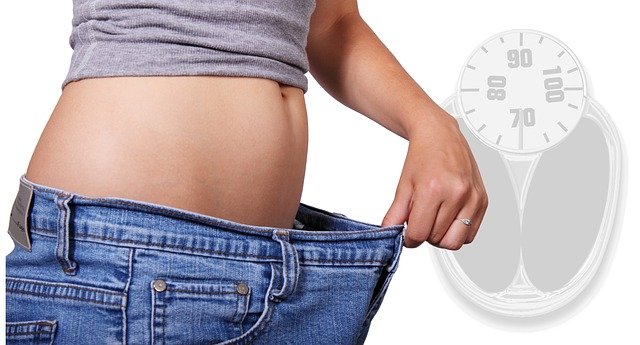
Liposuction is a body contouring procedure that removes unwanted fatty tissue from problem areas in your body using a small, thin tube (cannula) attached to a powerful vacuum device. Also known as liposculpture, this procedure effectively removes the fat under your skin by breaking the fat cells and suctioning them out of the target area. If you are considering this procedure to address your concerns, check out the following important things about liposuction.
Liposuction can be performed in different Body Areas
It is important to keep in mind that liposuction is recommended for the removal of unwanted fatty tissue in body areas that are resistant to a healthy diet and regular exercise. Some of the common problem areas that liposuction can address include the following:
- Abdomen
- Bra strap area
- Breasts
- Chin
- Hips
- Neck
- Outer and inner thighs
- Upper Arms
- Upper back
Liposuction can also help remove fat from facial areas such as the cheeks, chin, and neck. To know more about face liposuction, please visit https://www.cosmosclinic.com.au/face/lower-face-liposuction/.
You should be at or close to the Ideal Body Weight
Before the procedure, you should set a goal weight for yourself to ensure optimal results. In general, you should be 30 pounds of your ideal weight. The reason for this is that major weight fluctuations can have a significant effect on the results of your liposuction. If you don’t commit to a healthy lifestyle after the procedure and you gain a significant amount of weight, the fat cells from the treated area can increase in size or expand. This will cause the fatty tissue to build up again in the treated area, altering the results of the procedure. If this happens, you will need to undergo another liposuction to address your problem.
Liposuction is not a Weight Loss Procedure
You are not an ideal candidate for the procedure if you expect that liposuction can help you lose a significant amount of weight. It is not a weight-loss procedure. Instead, liposuction is a body contouring procedure that involves the removal of unwanted fat from your body. In fact, you will need to lose weight before the procedure to achieve your desired results and lower your risk of complications. Also, you will need to commit to a healthy lifestyle after the procedure as future gain weight can affect the results of the procedure. Thus, liposuction cannot help you lose weight but it can improve your body contour.
You need some Preparations before Liposuction
To achieve the best clinical outcome, you will need to do the following before the procedure:
- Achieve a stable weight by creating an exercise routine and undergoing dietary changes.
- Arrange for someone to drive you home and assist with activities of daily living after the procedure.
- Avoid cigarette smoking and alcoholic beverages.
- Avoid taking medications or supplements that can increase your risk of bleeding or bruising.
- Prepare a recovery area at home.
- Take several weeks off from work.
- Undergo the prescribed laboratory tests.
There is Downtime associated with Liposuction
As with any surgical procedure, there is downtime. The recovery time for liposuction will depend on the type of the procedure, the number of body areas needing treatment, and your desired results. In general, you will need to rest as much as possible in the first 24 to 48 hours following the procedure. During this time, you will likely experience swelling, bruising, and some discomforts at the incision sites. You can also feel tightness and stiffness in the treated area as your skin, muscles, and tissues stretch. After 2 to 4 weeks, you can gradually return to your daily routine.
Liposuction will Produce Scars
As with any surgical procedure that requires incisions, scarring is inevitable. Liposuction makes use of a small, thin tube attached to a powerful suction that is inserted into small incisions in the target area. Since the incisions are small and are placed in the natural folds of your skin, scar visibility will be significantly reduced, thus, producing discreet results. The number and quality of scars will depend on the incisions needed and your ability to heal.
Liposuction can be combined with other Procedures
To better meet your treatment goals, liposuction can be combined with other procedures. For instance, liposuction can be performed together with a tummy tuck to remove excess fat and lift the skin in your abdomen. This results in a tighter and well-defined abdominal region. Another procedure that can be combined with liposuction is breast fat transfer. It involves the harvesting of fat from a donor site (thighs, abdomen, flanks, or hips) through the process of liposuction and reinjecting the fat into problem areas of your breasts. Liposuction can also be done together with breast reduction to remove excess fat tissue and achieve a better breast profile.
Liposuction Requires General or Local Anaesthesia
On the day of your procedure, you will receive general or local anesthesia depending on the extent of liposuction. If large amounts of fat will be removed from multiple body areas, then general anesthesia will be used. For a minimal amount of fat, local anesthesia is enough to reduce discomfort.
Liposuction cannot lift your Skin
This body contouring procedure sculpts the target area by removing unwanted fatty tissue. It does not have a lifting effect so you may need to consider other surgical alternatives if you have severe skin sagging.
There are Risks and Complications associated with Liposuction
After the procedure, you may experience any of the following signs and symptoms:
- Anesthesia risks (allergic reaction, severe skin redness, or difficulty breathing)
- Blood clots
- Changes in skin sensation
- Contour irregularities
- Excessive bleeding
- Nerve damage
- Persistent pain
- Poor cosmetic results
- Severe bruising and swelling
- Skin discoloration
- Unfavorable scarring
Liposuction can help address unwanted fatty tissue that does not respond well to dietary changes and regular exercise. Before undergoing liposuction, it is recommended that you have a complete understanding of the procedure to help you with your decision-making process.










